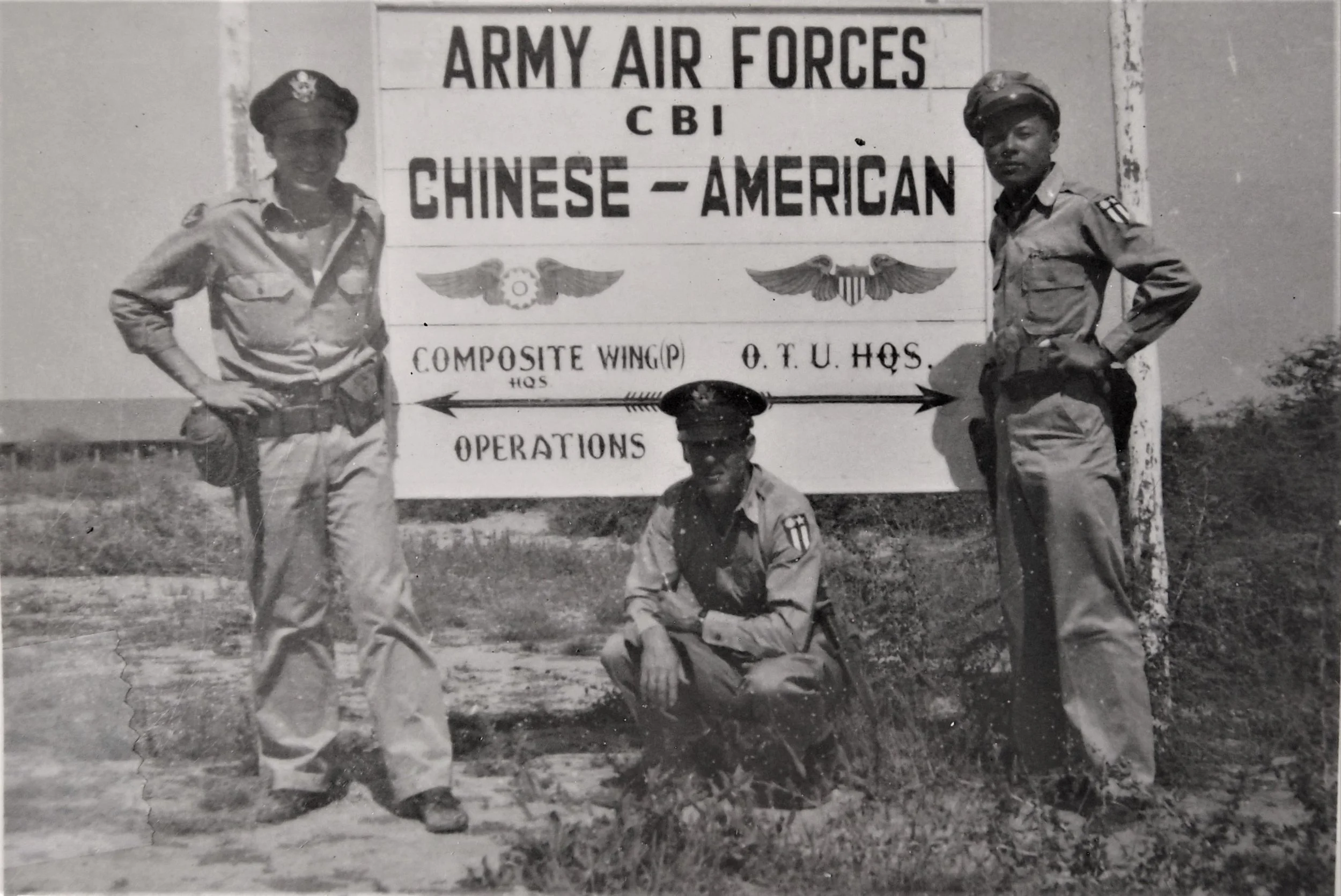“Flying Tigers New Emblem”
In early October of 1943, newspapers across the US announced that the 14th Air Force had officially adopted a new Flying Tigers emblem, with Maj. Gen. Claire L. Chennault's approval and endorsement. Former commander of the renowned American Volunteer Group that gained fame as the original “Flying Tigers,” as well as of the China Air Task Force that succeeded it, Chennault now served in command of the 14th Air Force. Its effectiveness soon earned it the moniker, "the Fighting Fourteenth.” Carrying on the Flying Tigers legacy under Chennault’s leadership, the 14th went on to win air superiority in China. In his memoirs, Chennault later praised the accomplishments of his air force and wrote, “It was a record of which every man who wore the Flying Tiger shoulder patch can be proud.”
“Chennault’s Baby” Wreaks Havoc
The month of September 1945 marked the final period of existence of the CACW. “Almost two years of operations were climaxed in August by the sudden ending of the war, thus bringing about the disbanding of the Chinese-American Composite Wing,” wrote the 1st Bomb Group’s acting historical officer. Conceived by Maj. Gen. Claire Lee Chennault, famed former commander of the American Volunteer Group (AVG), the CACW took Chennault’s plan to assist the Chinese even further than his previous efforts. Their mission to paralyze the infrastructure of the Japanese War Machine and to inhibit enemy troop movements by destroying cargo caravans, troop transports, railroads, tunnels, and bridges was unquestionably successful.
Chester M. (“Coondog”) Conrad
Maj. Chester M. Conrad served from March 1944 to February 1945 as commanding officer of the 3rd Bomb Squadron, 1st Bomb Group, Chinese-American Composite Wing. Known as "Chet" back home, he had picked up the sobriquet "Coondog" somewhere along the way (his radio call sign, according to my father). While previously serving in the 2nd Bomb Squadron, his aircrew was credited with shooting down a Japanese bomber. Conrad, with his 3rd Squadron, later provided air support to Chinese and American ground forces that retook Myitkyina, a Japanese stronghold used to attack Allied planes crossing the Himalayan “Hump.” He participated in many other successful missions, including a raid against storage facilities on the Hankow docks in January 1945. After his return to the US the following month, he continued to work with Chinese airmen. His military career was cut short in 1955, when then-Lt. Col. Conrad died as a result heart disease.
Willard G. (“Tex”) Ilefeldt
Along with several other replacements, 1Lt. Willard G. Ilefeldt had been attached to the 3rd Bomb Squadron as a B-25 pilot and appointed a flight leader in November 1944. Ilefeldt, called “Tex” because of an early childhood spent in Texas, additionally assumed the role of historical officer in January 1945. His first combat mission was a joint raid with the 2nd and 4th Bomb Squadrons against storage areas on the docks of Hankow. The bombers were escorted by 3rd Fighter Group P-40s and P-51s. Results were excellent. Ilefeldt went on to complete 37 missions before the end of the war. He returned from Calcutta to New York in November 1945. Although called a “dumb kid” as a child, he so successfully overcame his dyslexia and hyperactivity that he became an Episcopal priest and earned a Doctorate in Pastoral Counseling. He later became a published author.
Chennault’s Embarrassment
As 1945 began, military discipline and courtesy in the new China Theater came under increasingly-careful scrutiny. Reports that ranged from failure to salute officers and incomplete or improper uniform to public intoxication and coercing local young women to accompany GIs to the photographer’s shop had been received at Chinese-American Composite Wing headquarters. Maj. Gen. Claire L. Chennault issued a letter to all unit commanders of the 14th Air Force in which he referenced a recently-received radiogram from Maj. Gen. Albert C. Wedemeyer: "The CO was very much displeased with lack of discipline and general sloppy appearance of all ranks and grades.” He urged all personnel under his command to be properly dressed and that they "avail themselves" of the facilities provided for shaving. "Such comments on the state of discipline of this command as quoted above are a source of embarrassment to me and I expect every commander to take immediate vigorous corrective action to prevent a recurrence of this criticism.”
“Operation Magic Carpet”
With V-J day a reality at last, personnel of the 3rd Bomb Squadron and others of the Chinese-American Composite Wing (now disbanded), needed to be transported back to North America, but how could such a monumental task be accomplished? It was accomplished by bringing most of them home via "Magic Carpet Cruises." It proved to be the greatest mass movement of humanity ever attempted in history.






